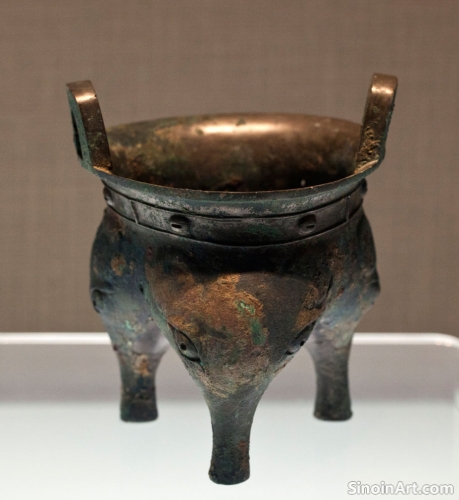The Symbolic Importance of Bronze Animals in Ancient China: Power, Protection, and the Supernatural
|
Beyond the taotie and mythical creatures, bronze animals in ancient China served as more than just decorations; they often embodied specific symbolic meanings related to power, protection, and the supernatural. The inclusion of specific animals on these pieces often reflected the values and beliefs of the cultures and social groups that created them. The use of animal figures helped to imbue these objects with both practical and also spiritual purpose.  Depictions of real-world animals, such as horses, oxen, sheep, and birds, often held symbolic meanings related to prosperity, fertility, and the natural world. These animal representations often connected the mundane world with the larger cycles of nature. The use of animals in the design of bronze works often highlights the important relationships between humans and the natural world.  Mythical beasts, such as dragons, phoenixes, and qilin (麒麟), were also frequently used, often symbolizing divine authority, good fortune, and spiritual power. These mythical beasts also helped to create a stronger connection with the otherworldly. These fantastical beasts were also key elements in the ancient Chinese understanding of the spiritual realms.  The placement and use of bronze animals, whether they were used as vessel decorations or as standalone objects, often reflected their specific symbolic meanings and their role in rituals and ceremonies. The careful arrangement and use of these pieces is a testament to their underlying importance. The selection and placement of these symbols was not accidental. The study of bronze animals provides valuable insights into ancient Chinese cosmology, beliefs about nature, and the complex interplay between the seen and unseen worlds. The careful study of animal symbols allows us to gain new insight into the minds of the people who created these works of art. |
Tag : bronze animal symbols, ancient Chinese mythology, animal art, ritual figures, bronze beasts
Related information
- Bronze Ware and Ancient Chinese Textile Production: Spindle Whorls, Weaving Tools, and Textile Art
- Bronze Ware and Ancient Chinese Trade Networks: Evidence of Cultural and Economic Exchange
- The Use of Bronze in Ancient Chinese Agriculture: Tools and Innovations
- Bronze Ware and Ancient Chinese Conceptions of Time: Cycles, Rituals, and Cosmic Order
- The Role of Bronze in Ancient Chinese Warfare: Strategies and Weapons
This article explores the use of bronze in ancient Chinese textile production, highlighting its role in creating spindle whorls, weaving tools, decorative elements, and the interplay between metalworking and textile crafts.
This article explores the role of bronze ware in ancient Chinese trade networks, highlighting the distribution of artifacts, the movement of raw materials, and the cultural and economic impact of these trading connections on the development of China.
This article explores the use of bronze in ancient Chinese agriculture, highlighting the types of tools and implements used, its role in enhancing agricultural productivity, and its impact on the development of ancient Chinese society.
This article explores the connection between bronze ware and ancient Chinese conceptions of time, highlighting its role in creating timekeeping devices, marking ritual cycles, and revealing a worldview that emphasized the importance of understanding the cosmos and its patterns.
This article explores the role of bronze in ancient Chinese warfare, highlighting the types of weapons, armor, and chariot fittings, and examining the strategies and tactics employed, revealing the military power of the era.